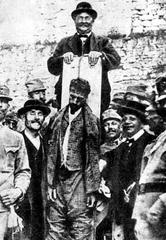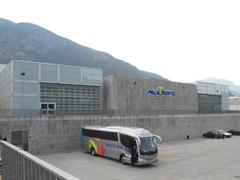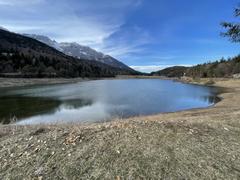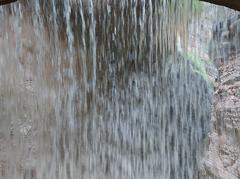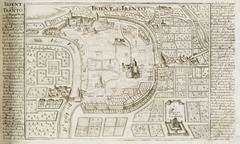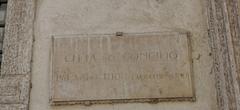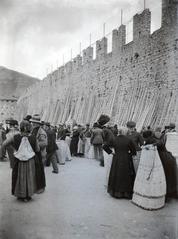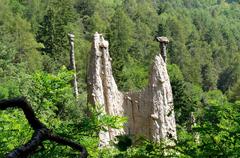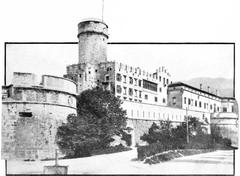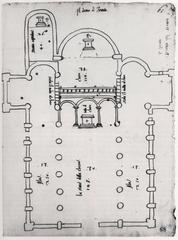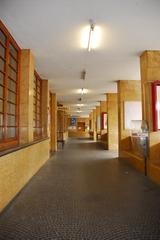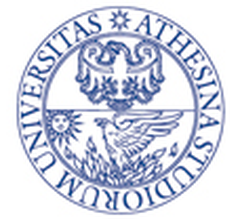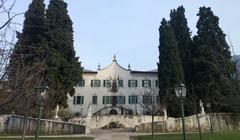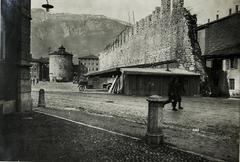Monument to Giosuè Carducci in Trento: Visiting Hours, Tickets, and Visitor Information
Date: 14/06/2025
Introduction
Located in the heart of Trento, Italy, the Monument to Giosuè Carducci stands as a powerful tribute to Italy’s first Nobel laureate in literature and an enduring emblem of national pride and cultural identity. Giosuè Carducci (1835–1907) was not only an influential poet and intellectual but also a significant figure in the Italian Risorgimento, the movement for Italian unification. Erected in Piazza Dante, the monument reflects Trento’s historical transformation, from Austro-Hungarian rule to its integration into Italy after World War I.
This comprehensive guide explores the monument’s historical context, artistic features, visiting information, and nearby attractions—providing all the details needed for travelers and cultural enthusiasts to appreciate this remarkable site. For more background on Carducci’s life and legacy, see Britannica and Encyclopedia.com. For up-to-date visitor resources, refer to the official Trento Tourism Website.
Historical Context and the Legacy of Carducci
Carducci and the Italian Nation
Born in Valdicastello, Tuscany, Carducci was raised in a family committed to republican and anti-clerical ideals (Britannica). His early education was shaped by the political and cultural upheavals of the Italian Risorgimento. Carducci became a professor at the University of Bologna in 1860, profoundly influencing Italian literature and education for over four decades.
Carducci’s poetry, deeply rooted in classical traditions, championed national unity, cultural renewal, and Italy’s historical heritage. He was a passionate advocate of irredentism, supporting the annexation of Italian-speaking regions under Austro-Hungarian control—an ideology reflected in his works such as “Saluto italico” and “Miramar” (Bibliotheca Dantesca, 2023, p. 255).
Awarded the Nobel Prize in Literature in 1906, Carducci became a national icon, his works exemplifying Italian patriotism and literary excellence (Nevermore Poem Archives). The decision to commemorate him in Trento—then a contested city—was a deliberate assertion of Italian identity.
The Monument’s Origins and Artistic Features
Creation and Symbolism
The idea for the monument emerged during a period of heightened Italian irredentism, when Trento was still under Austrian rule. Its construction was funded by widespread public subscription, symbolizing civic unity and the determination of the people of Trentino to assert their Italian heritage (ladigetto.it).
Designed by Florentine sculptor Cesare Zocchi after a national competition, the monument’s neoclassical style reflects Carducci’s own literary preferences. The central bust of Carducci, crafted in marble or bronze, is mounted on a tall pedestal featuring inscriptions and classical motifs such as laurel wreaths and thistles—evoking poetic achievement, resilience, and the Carducci family name (Venere.it). Reliefs and decorative elements around the base reference Carducci’s works and the ideals of liberty and unity.
Piazza Dante and Urban Identity
The monument is prominently located in Piazza Dante, a lively public square landscaped by Antonio Tambosi, an irredentist and cultural leader. The inauguration in 1896 was a major civic event, attended by local dignitaries and ordinary citizens, and reinforced the site’s importance as a focal point for public gatherings and commemorations (savoringitaly.com).
Visiting the Monument: Hours, Tickets, and Accessibility
Location
Piazza Dante, Trento, Italy. The monument is centrally located, a short walk from Trento’s train station and close to major attractions such as Castello del Buonconsiglio and Piazza Duomo (Tuttocittà).
Visiting Hours
- Monument: Outdoors and accessible 24/7, year-round.
- Guided Tours: Typically available 9:00 AM–6:00 PM, Tuesday–Sunday. Check with the Trento Tourism Office for current schedules.
Tickets and Entrance Fees
- Monument: Free to visit; no ticket required.
- Nearby Museums: Admission fees may apply for sites such as the Carducci house museum and the Museo del Risorgimento.
Accessibility
- Piazza Dante is wheelchair accessible, with paved paths and public transportation nearby.
- Some adjacent historic streets may have uneven surfaces; visitors with mobility challenges should plan accordingly.
Practical Tips for Visitors
- Best Time to Visit: Spring and early autumn offer pleasant weather; summer features cultural events and festivals; winter brings a festive atmosphere with Christmas markets.
- Photography: The monument and surrounding gardens are best photographed in soft morning or evening light.
- Quiet Reflection: Visit early morning or late evening for a peaceful experience.
- Nearby Amenities: Cafés, restaurants, and shops surround Piazza Dante. Public restrooms are found in larger establishments.
- Safety: Trento is safe with low crime rates. Standard precautions apply.
Suggested Itinerary
- Morning: Visit the Monument to Giosuè Carducci and, if open, the nearby house museum.
- Late Morning: Walk to Piazza Duomo for coffee and a visit to Trento Cathedral and the Diocesan Museum.
- Lunch: Enjoy regional specialties at a local trattoria.
- Afternoon: Explore Castello del Buonconsiglio or stroll to the Monument to Dante Alighieri.
- Evening: Aperitivo in the historic center.
Integrating the Monument Visit
- Literary Itinerary: Combine your visit with the Carducci house museum and the Museo del Risorgimento to delve into Italian unification and cultural history (Unibo).
- Cultural Walks: Include stops at the Monument to Dante Alighieri and other literary landmarks (Wikipedia).
- Culinary Experiences: Savor Trentino cuisine at local restaurants or wine bars.
- Events: Check the city’s calendar for literary readings and cultural festivals held in Piazza Dante.
Frequently Asked Questions (FAQ)
Q: What are the visiting hours of the Monument to Giosuè Carducci?
A: The monument is accessible 24/7 with no admission fee.
Q: Are tickets required?
A: No, the monument is free to visit. Tickets may be required for nearby museums.
Q: Is the area wheelchair accessible?
A: The square is generally accessible, though some nearby historic streets may be uneven.
Q: Are guided tours available?
A: Yes, many walking tours of Trento’s historic center include the monument.
Q: What are some nearby attractions?
A: Castello del Buonconsiglio, Trento Cathedral, Museo Diocesano Tridentino, and Piazza Duomo.
Conclusion
The Monument to Giosuè Carducci in Trento is not merely a sculpture but a living testament to the city’s intertwined narratives of literary achievement, political aspiration, and cultural identity. It remains an accessible, evocative landmark and a rich site for reflection, education, and exploration.
Plan your visit using this guide, and integrate the monument into your broader Trento experience—whether you are a history buff, literature lover, or cultural traveler. For the latest information on tours, events, and local amenities, consult the Trento Tourism Official Website and consider downloading the Audiala app for curated guides and interactive maps.
Sources and Further Reading
- Britannica: Giosuè Carducci
- Nevermore Poem Archives
- Bibliotheca Dantesca, 2023
- Casa Carducci Official Site
- Encyclopedia.com: Carducci, Giosuè
- Wikimedia Commons: Bust of Giosuè Carducci in Trento
- Venere.it: Meaning and History of the Last Name Carducci
- Ladigetto.it: Historical Analysis of the Monument in Trento
- SavoringItaly.com: Trento Travel Guide
- Tuttocittà: Largo Giosuè Carducci Map
- Vie OpenAlfa: Largo Giosuè Carducci Amenities
- University of Bologna: Giosuè Carducci Biography

